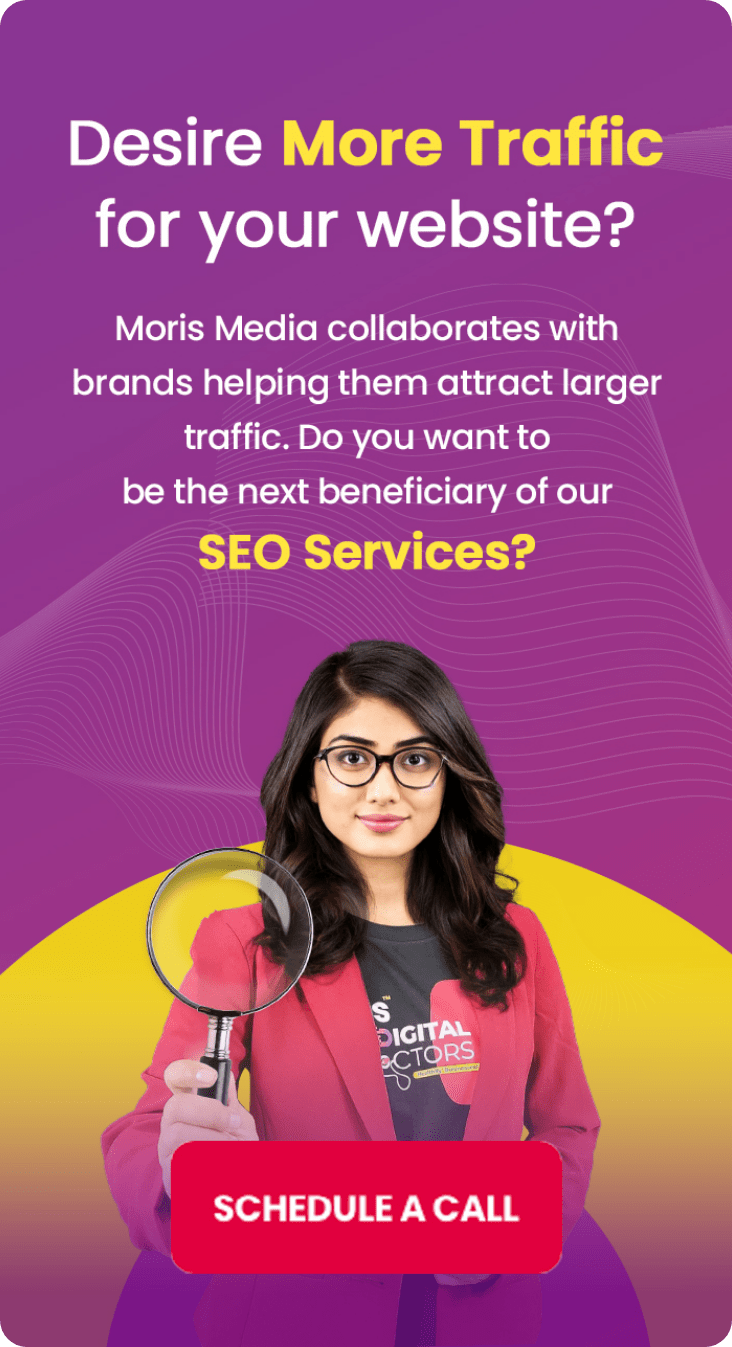Hope you enjoy reading this blog post.
If you want the Moris Media Team to help you get more traffic, just book a call.
Thursday, 7 August 2025
Digital media has marked a critical presence in our lives. This has facilitated citizen journalism and user-generated content to rapidly reshape the landscape of information dissemination. Citizen journalism, propelled by ordinary individuals, empowers people to report news from their perspectives, bypassing traditional journalistic gatekeepers. Simultaneously, user-generated content, an umbrella term for various types of media created by the public, is dominating online spaces, fostering a dynamic two-way communication stream, unlike the one-way flow of traditional media. This interplay has cultivated a profound shift, transforming passive news consumers into active news creators. The growth and influence of citizen journalism and user-generated content herald a new age of democratized information, bridging gaps between facts and audiences.
Moris Media, the best digital marketing agency in India explores its roots, implications, challenges, and future trajectory, illuminating how it's sculpting our media-saturated world.
The story of journalism is as dynamic and evolving as the societies it serves. Its roots can be traced back to ancient Rome, where the Acta Diurna, daily public records, were created to keep citizens informed. The ideal birth of journalism is linked with the advent of the printing press in the 15th century. This technology gave rise to newspapers, making information more widely accessible and spawning the era of mass media.
The 19th and 20th centuries witnesses the expansion of journalism as it embraced new media forms. The invention of the telegraph, radio, and television, transformed the way news was gathered and disseminated, making information sharing faster and more immediate. Journalism became a highly revered profession, with journalists seen as gatekeepers of information.
The digital revolution in the late 20th century signalled another significant shift. With internet becoming a part of our lives, it led to the creation of online news outlets, blogs, and social media platforms. This allowed real-time reporting and broadening the field beyond traditional journalists. This period was marked by the growth of 24-hour news cycles and the increasing significance of speed over thoroughness.
Citizen journalism and user-generated content as a field emerged only in the beginning of the 21st century. As digital technology and smartphones became increasingly affordable and ubiquitous, anyone with an internet connection could potentially reach a global audience. This democratization of media has fundamentally altered journalism's landscape, blurring the lines between news consumers and producers and challenging the role of traditional media gatekeepers. The evolution of journalism is a testament to its adaptability, reflecting societal changes, technological advancements, and shifting paradigms of information consumption.
Citizen journalism, a byproduct of technological progress and internet proliferation, has emerged as a powerful agent of change in the realm of news reporting. Unlike traditional journalism, which largely relies on professional reporters, citizen journalism is founded on the efforts of ordinary individuals who share news and information, often via digital platforms.
As discussed beforehand, the real acceleration of citizen journalism occurred in the early 21st century as social media made an exploding entry into our lives facilitated by the increasing usage of smartphones. This convergence of technology and connectivity enabled real-time, on-the-ground reporting by anyone, anywhere, thus breaking down barriers to participation in the media landscape.
Some catastrophic global events like the 9/11 attacks, and the Indian Ocean tsunami in 2004 became the catalyst to the rise of citizen journalism. We saw ordinary citizens become the first to report breaking news, capturing raw footage and sharing firsthand accounts of events that traditional media outlets could not immediately access.
While citizen journalism's influence has grown, it also brought along questions of credibility, ethics, and the quality of reporting. However, the core essence of citizen journalism—amplifying voices of ordinary people and broadening the scope of news reporting—has undeniably shaped the modern media ecosystem. As technology and digital literacy continue to evolve, so will the landscape of citizen journalism, offering exciting new possibilities for public participation in the journalistic process.
User-generated content (UGC) incorporates any content form that is created by users or the general public. It is these days significantly transformed the digital landscape. Its sporadic rise was heralded by Web 2.0, when users started creating, sharing, and engaging with content in real time taking advantage of interactive web platforms.
The impact of UGC is manifold and far-reaching. For one, it has democratized content creation. No longer is the creation of content restricted to a handful of professionals. If you have a smartphone and internet connection, you can produce and share content that has the potential of reaching millions.
UGC also plays a substantial role in influencing public opinion. Social media platforms like Facebook, Twitter, and Instagram also give users the leeway to share perspectives, contribute to online discourses, and even steer narratives. During critical events like elections or crises, UGC can play a significant role in shaping public understanding and response.
Moreover, UGC is changing the dynamics of traditional industries like news, entertainment, and advertising. Media companies now regularly feature UGC, recognizing its potential to offer diverse viewpoints and authentic stories. Brands are also leveraging UGC for marketing, as user-created content can offer authenticity and relatability that resonates with other consumers.
While the impact of UGC is largely positive, it does present challenges, particularly around issues of credibility, privacy, and control over content. Nonetheless, its influence on shaping our digital society remains undeniable and continues to grow in our increasingly interconnected world.
Citizen journalism and user-generated content (UGC) are two interconnected phenomena that have significantly reshaped the media landscape. Both concepts centre on the idea of democratizing content creation and distribution, allowing individuals to participate actively in information dissemination rather than being passive recipients.
Citizen journalism is a form of UGC but with a specific focus on news and information sharing. Citizen journalists actively engage in the process of gathering, reporting, and analysing news events. They capture on-the-spot events, share personal narratives, or perform investigative tasks traditionally associated with professional journalists.
UGC has a much broader perspective as it includes all content created by any individual. This can encompass the whole gamut that starts with your personal blogs and reviews, along with social media posts and videos, podcasts, as well as any digital art. While not all UGC constitutes journalism, it provides a wealth of raw material that citizen journalists can draw from.
In essence, citizen journalism and UGC have a symbiotic relationship. The rise of citizen journalism has been facilitated by the explosion of UGC, while the growing respectability and influence of citizen journalism have in turn added value to UGC.
Citizen journalism and user-generated content (UGC) bring several advantages. They democratize the information landscape, allowing anyone to create and share content, thus fostering diverse voices and perspectives. They provide real-time, on-the-ground insights, often enabling faster reporting than traditional media. They also foster engagement and interaction, transforming consumers into active participants in the news process.
However, these two trend-setting practices are not bereft of challenges. One major concern is the issue of credibility and accuracy. Without professional training and editorial oversight, citizen journalists may unknowingly spread misinformation or fail to adhere to journalistic standards of objectivity and fairness. This problem is amplified in the realm of UGC, where the sheer volume of content makes fact-checking a daunting task.
Another challenge is related to privacy and legal issues. Content creators may inadvertently infringe copyright laws, invade someone's privacy, or even incite violence or hate speech.
Lastly, the economic sustainability of citizen journalism is uncertain. While some citizen journalists manage to earn revenue through advertising or crowdfunding, for many, it remains a non-remunerative activity.
Despite these challenges, the rise of citizen journalism and UGC is an undeniably powerful trend, contributing to a more diverse, interactive, and democratized media landscape, albeit with its unique set of complexities and responsibilities.
The future of citizen journalism and user-generated content (UGC) holds great promise, but also significant challenges. As we witness the continuous evolution of digital technology, it will bring down prospective barriers in the content creation and distribution process. This will empower us, the common people, to be more participative in the news process.
This landscape is also getting boosted with new technologies like Artificial Intelligence, Augmented Reality and Blockchain becoming part of our lives. Artificial intelligence could be used to automate fact-checking or identify trending topics for citizen journalists to cover. Augmented reality could offer immersive storytelling experiences, while blockchain could enable greater content authenticity and traceability.
However, these advances will also bring new challenges. As deepfake technology improves, the risk of disinformation and manipulation grows, making it harder to discern truth from falsehood. The digital divide may also widen, as those with access to more advanced technologies gain a larger platform.
While the exact future is uncertain, it's clear that the role of citizen journalism and UGC will continue to grow. Traditional news organizations may need to adapt their models to better incorporate and verify UGC. Meanwhile, education and media literacy will be key to helping the public critically engage with content and use these tools responsibly.


The Power of Team Calendar: Boosting Efficiency and Collaboration with moCal
Read More
Mastering Business Time Management with moCal's Online Calendar For Business
Read More
Unlocking Seamless Collaboration with moCal's Online Shared Calendar
Read More
Unlocking the Power of 7-in-1 moCal: Redefining Efficiency in Modern Business
Read More
Elevating Personal Branding: The Moris Digital Doctors Prescription
Read More